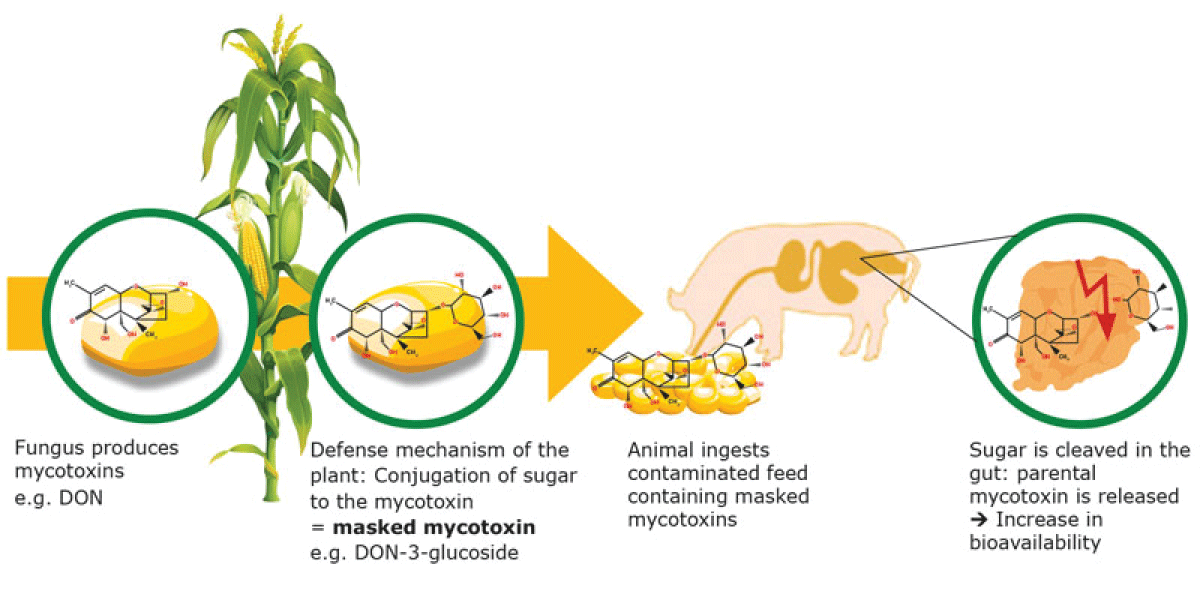Abstract
Fungi, and especially mold fungi, play a very important role in natural environments, as well as in the food industry for the production of many specialized products. However, many of them, under favorable conditions, are capable of producing toxic compounds called mycotoxins. Many of them have an adverse effect on the growth and development of all groups of organisms, including humans. Mycotoxins can appear in all food products and animal feed. Mycotoxins accumulated in food of plant and animal origin and consumed by humans can accumulate in various tissues and organs, which results in disorders in their functioning and may cause cancer. Plants have the ability to defend themselves against mycotoxins by neutralizing them as a result of the glycosidation process. Mycotoxins neutralized in this way are called “masked mycotoxins”, which are not toxic to plants, but after entering the body of animals or humans in the digestive tract, they return back to their original toxic form. Let’s appeal and spread knowledge about mycotoxins because they pose a constant threat to the health of people and farm animals.








